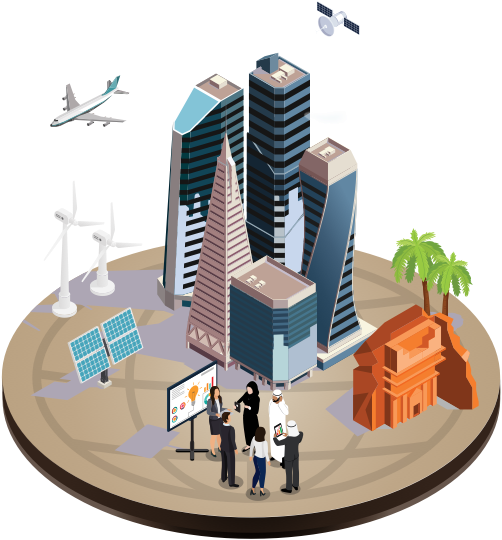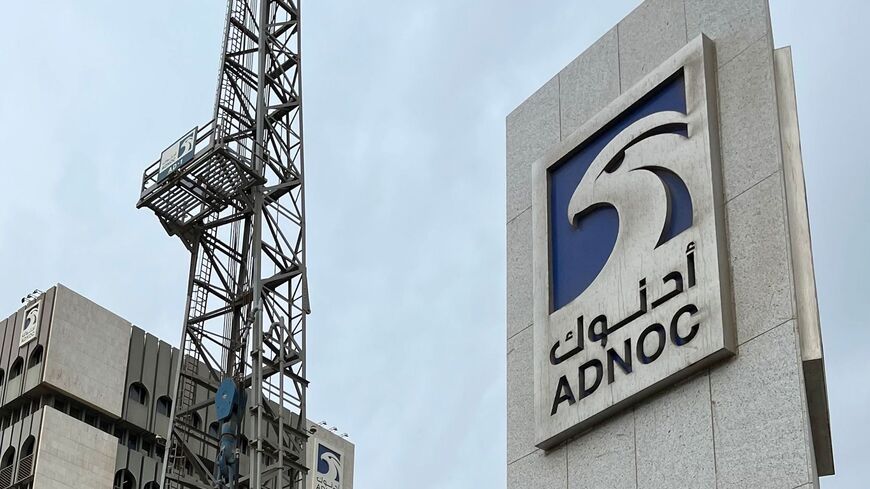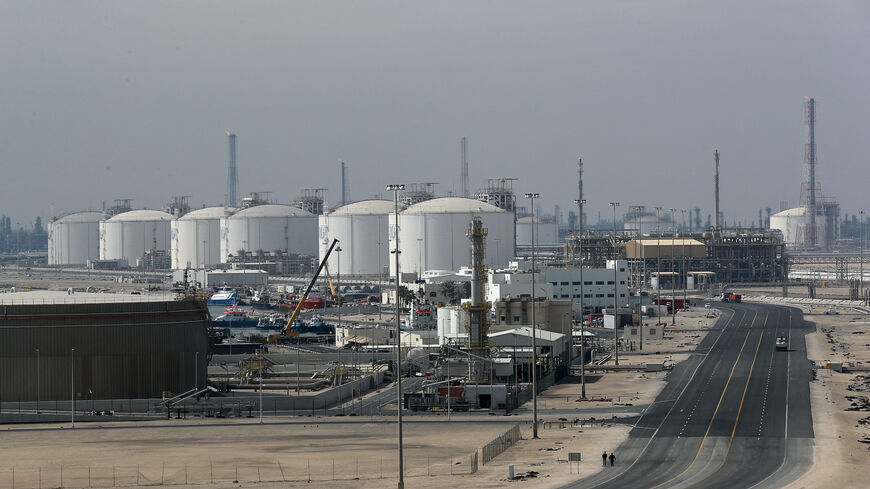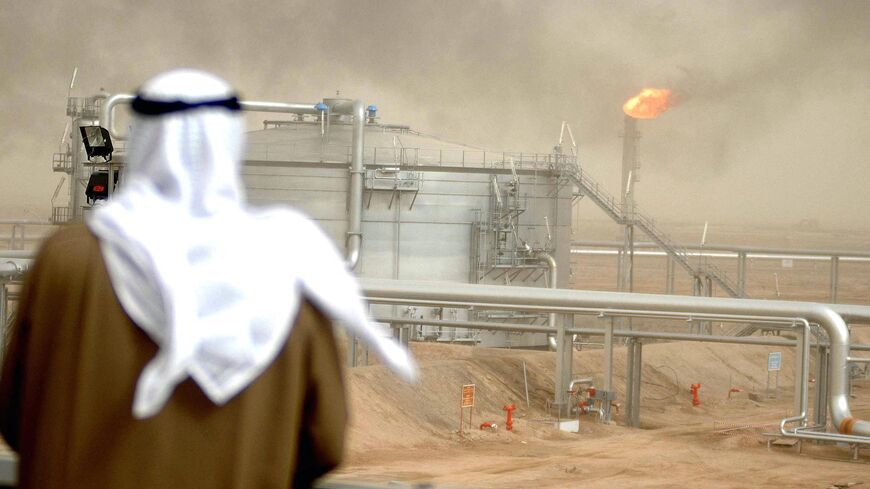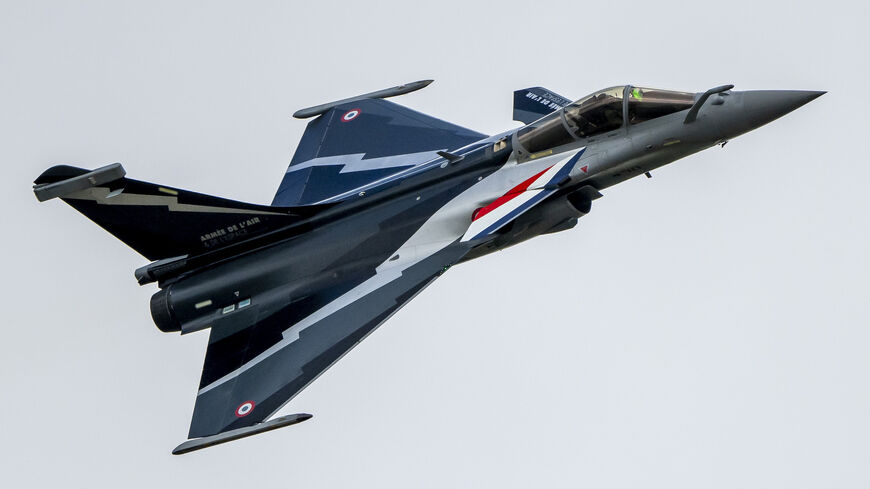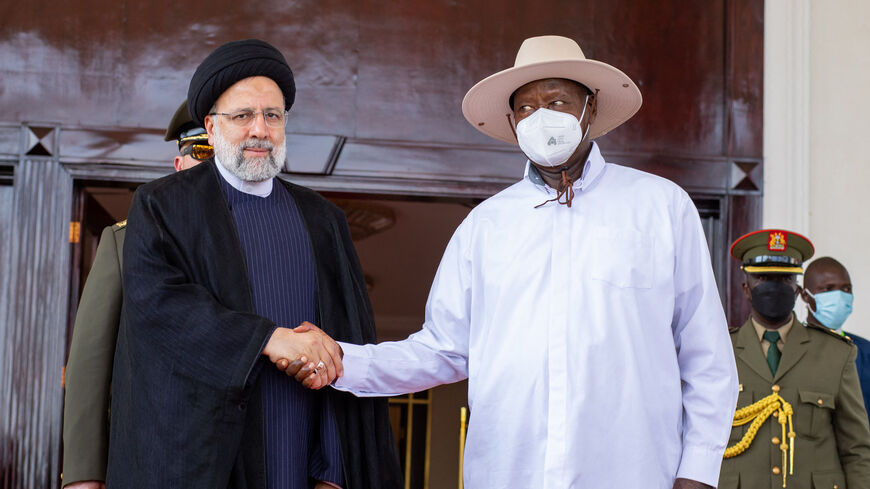Qatar dominates fragmented Middle East LNG growth amid global competition
Al-Monitor Pro Members
Gerald Kepes
President, Competitive Energy Strategies, LLC
June 27, 2023
Future Middle East and North Africa liquefied natural gas (LNG) is really a story about Qatar’s LNG program. Qatar LNG could be as much as 70% of MENA LNG exports by 2025, increasing thereafter. In the 2030s, MENA LNG will be almost exclusively Qatar LNG, with much of North Africa a graveyard for liquefaction trains.
The abrupt departure of Russian pipeline gas from most European markets in 2022-2023 created opportunities for LNG producers globally. But mostly the opportunity is for spot cargoes and shorter-term contracts (less than 10 years). European states want price stability but are uncertain regarding needs past 10 years due to the pace of the energy transition.
Longer term, Russia’s LNG exports will not be a competitive threat to MENA (Qatar) LNG expansion due to the reaction to the continued invasion of Ukraine. Coal demand in China, India and other Asian markets is the biggest challenge to Qatar’s LNG expansion, less so the continued rise of US LNG. As long as Qatar LNG maintains access to finance and technology, and offers equity access to Chinese and other Asian partners, it will be competitively advantaged.
Capacities
- Installed liquefaction (nameplate) capacity is about 139 million tons per annum (mtpa) in six countries in the MENA region with actual utilization much less at many sites. MENA LNG exports were about 115 mtpa versus 390 mtpa globally in 2022.
- Algeria: Nameplate capacity of 25.5 mtpa from two LNG sites, Arzew and Skikda, has been underutilized for years, about 47% most recently. The cause is constrained natural gas production capacity, limited port capacity (at Skikda, now being alleviated) and lack of reinvestment.
- Libya: Marsa El Brega LNG nameplate capacity was 3.2 mtpa. The plant last produced LNG in 2011 and is inoperable.
- Egypt: Utilization of nameplate capacity of 12.2 mtpa from two facilities, Idku and Damietta, has been volatile from 0% in 2015 to a 15 year high of 66% in 2022; current performance is driven by imported Israeli natural gas. Volatility is driven by rising domestic demand for gas and swings in Egyptian gas production; seasonality patterns may see Egyptian LNG exports fall to zero this 2023 summer. Future Egyptian LNG performance will be driven by an expansion of gas imports from Israel and tiebacks of multiple Cyprus gas fields into Egyptian export infrastructure. Egyptian LNG will struggle.
- Israel/Cyprus: Neither country has an existing LNG plant. Cyprus’ plans rest on finding a single, large field offshore, whereas Israeli potential is founded on a proposed 2.5 - 5 mtpa floating LNG (FLNG) project sourced from Leviathan field. Alternatively, that gas could be tied into Egypt’s natural gas export infrastructure.
- Yemen: The Balhaf facility has a nameplate capacity of 6.7 mtpa but has not functioned since 2015 due to Yemen’s civil war. Utilization rates were high. Resource potential is uncertain; expansion is less likely, even assuming a restart of LNG operations.
- Oman: Recent debottlenecking of Qalhat LNG raised capacity to roughly 12 mtpa. Utilization is very high, near or at 100%. There are no plans to increase LNG output in the future, as emphasis shifts to lower carbon blue ammonia and domestic uses.
- UAE: Das Island LNG’s nameplate capacity of 5.8 mtpa is due for a debottlenecking project increasing capacity to 6.6 mtpa. Utilization has been running at or near 100%. A planned facility at Ruwais (9.6 mtpa) should raise total capacity to 16.6 mtpa in 2028.
- Qatar: Nameplate capacity is 77 mtpa; utilization has been roughly 100%. Qatar’s LNG program is unique in the region and world due to its scale and sourcing from a single field, the North Field. With few exceptions globally (offshore Australia), LNG complexes are sourced from multiple fields. From 2005 to 2017, North Field was under a development moratorium for several reasons, chief among them to establish long-term production performance. Post-2017, investment plans have evolved to increase LNG output to 110 mtpa in 2026 with a further increase to 126 mtpa in 2027. Further increases in the 2030s are possible.
- Substantial volumes of natural gas liquids (including condensates, liquid petroleum gas, LPG and ethane) are produced along with methane gas. Liquids content varies from field to field. Example: current gas liquids production in Qatar is roughly 750,000 b/d; LNG expansion plans will increase gas liquids output to over 1.2 million b/d. The liquid streams can be very profitable, priced at a premium to most grades of crude oil.
- Existing and likely plans would bring total MENA LNG nameplate capacity to 198.6 mtpa in 2029, 60% from Qatar. This assumes that Yemeni LNG will be restored and no Israeli/Cyprus LNG. Actual exports of LNG will be further concentrated; utilization will vary widely — Yemeni, Egyptian and Algerian utilization is likely to be much less than 100%. Qatar LNG could be as much as 70% of MENA LNG exports by 2025, and this will increase thereafter.
Opportunity and Competition
- The departure of Russian pipeline gas from the European market in 2022-2023 created opportunities for LNG producers globally. The short term demanded spot LNG and the medium term invited ~10 year LNG supply contracts, not the longer term favored by greenfield projects and others seeking to rollover existing contracts for stability. Europe wants price stability but not longer-term contracts due to the pace of the energy transition.
- Spiking LNG prices in 2022 presented significant opportunities for Egypt, Oman and others (and Chinese entities who resold their cargoes) in Europe and Asia. Prices have fallen since, but buyers were reminded of the value of longer-term contracts with stable pricing. Plans were already underway, but Qatar, the UAE and Oman are emphasizing supply security as they negotiate for the renewal of existing agreements and new contracts for LNG expansion.
- Global LNG markets in 2022 highlighted rising US LNG supplies with much of it sold on the spot market; the United States supplied roughly two-thirds of incremental LNG volumes into the European market last year. US LNG and Middle East LNG producers seek different dimensions in terms of contract duration, pricing structure and security of demand.
- For North African LNG producers, the biggest competition facing LNG exports is the domestic market competition for natural gas in the face of stagnant or declining natural gas output. Industrialization, power generation and, in the case of Algeria, gas reinjection for pressure maintenance for crude oil has tended to outcompete gas feedstock for LNG. This is now true for the Middle East producers where domestic market demand now includes petrochemicals, desalination and other new industries. This is potentially offset by renewables supply (wind, solar and hydrogen), but much of the offset is just potential. Direct burning of crude oil and diesel for electricity fills the gap in some locales.
- For much of MENA, the only way out for governments would be massive investment in renewables capacity and/or the discovery of large, new natural gas plays; this is limited by resource endowment and antiquated policies toward upstream investment. Egypt’s solution may be unique; sustaining a modicum of LNG exports over the next 10 years will rely on importing natural gas from neighbors.
- The long-term opportunity for the Middle East LNG producers, if not also North Africa, are Asian markets, first and foremost China, but importantly, Japan, South Korea and other industrialized Asian economies, including India. Coal-fired power generation is the biggest competitor in China and India for new incremental LNG demand.
- Global LNG scenarios vary, but a mid-range forecast envisions capacity at roughly 670 mtpa in 2030 with utilization at 80% to 85%.
- Future MENA LNG is really a story about Qatar’s LNG program. Much is made of the United States and Qatar vying for the number 1 position in global LNG, but US volumes will outpace those from Qatar in the coming years. More important is Qatar’s ability to secure long-term demand for its LNG program versus the likelihood that much of the US LNG will continue to be sold on a short-term basis.
- Competition from East Africa: New and rising volumes of LNG from Mozambique and Tanzania are substantial but do not displace the demand for Middle East/Qatar LNG in Asian markets.
- Australia and Russia: Australia has been a global leader in LNG since 2015, but cost, resource maturity and policy seem likely to constrain output at roughly 78-80 mtpa with new developments backfilling existing facilities. Prior to Russia’s renewed invasion of Ukraine in February 2022, Russian LNG capacity was 33 mtpa. Government objectives in 2021 were to produce 140 mtpa by 2031-2035 (high case), but this has since been lowered to 100 mtpa, with projects under construction to achieve 66 mtpa. But the shortage of experienced Russian technical staff and access to LNG technology threaten the 100 mtpa objective and will certainly slow if not damage achievement of 66 mtpa. Western sanctions on Russia’s LNG sector ban the provision of LNG equipment and technologies. This will also create short-term problems regarding maintenance for existing LNG plants based on Western equipment and technology; scheduled turnarounds for the remainder of 2023 will signal the impact on performance. Longer term, with sanctions leakage and the onus on domestic development of technology, Russia can build more capacity. Natural gas resources are sufficient but development is expensive. How long will the Russian state be able to offer the tax credits and zero export duties that have brought Russian LNG to its current levels? And will Russian LNG be able to compete for markets focused on security of supply? Questionable.
Scenario 1: There is a resurgence of North African LNG via higher utilization of existing LNG capacity based on new natural gas plays, new fiscal terms and a larger role for foreign investment.
This would be coupled with a faster renewables capacity build and, in Egypt’s case, maximum success with attracting natural gas imports from neighbors (offshore Israel, Cyprus and Lebanon). This scenario is a possibility but perhaps does not significantly alter the conclusions suggested in the base scenario.
Scenario 2: Local and regional instability in the Arabian Gulf impact the extraordinary concentration of LNG supply in Qatar — including UAE LNG also.
Qatar and UAE LNG will comprise roughly 25% of global LNG supplies from 2025 onward. Qatar LNG is sourced from a single natural gas field. The same gas field is also an enormous contributor to Iran’s national gas system. South Pars (as known on the Iranian side) comprises 75% of Iran’s domestic natural gas supply, or roughly 270 bcm/y. Whether reservoir performance or the impact of potential instability on facilities and operations, the risk from lack of diversification is significant albeit with a low probability.
The base scenario assumes a changing global business environment with managed tension between the United States and China; other large economies have varied positioning strategies. The Middle East producers will execute their expansion programs, although delays are always possible. Experienced operations, access to technology, finance, equity partners and offtakers are all well demonstrated and not subject to the resource and policy factors driving Australian LNG. North Africa LNG will continue to struggle with low and volatile utilization.
US LNG capacity will increase, exceeding Qatar capacity, and will be intensely competitive in Europe with wider dispersion into other markets. And it is more likely to be spot cargoes and shorter duration contracts. Russian LNG will lose market share as global LNG expands.
Qatar LNG could be as much as 70% of MENA LNG exports by 2025, increasing thereafter. Qatar has a strategy to ensure its expansion program will have secure outlets. Two data points are the award of a 27-year LNG sales contract (longest on record) and the sale of 5% of one of the planned LNG trains, both to Sinopec. There will be additional long-term contracts and equity sales with Chinese entities. As long as Qatar LNG maintains access to finance and technology and offers equity access to Chinese and other Asian partners, it will be competitively advantaged.
There is risk: Patterns of resource endowment, investment, energy transition, and domestic macroeconomic changes and political requirements lead to a much higher degree of supply concentration.
Gerald Kepes has more than 35 years of experience as a consultant and petroleum geologist in the global energy industry. Most recently, he was Vice President in Energy & Natural Resources for IHS Markit (now S&P Global), and previously, a PFC Energy Partner, where he established PFC’s global upstream consulting practice. He also held various positions with a US oil company in North Africa and the Middle East.
We're glad you're interested in this memo.
Memos are one of several features available only to PRO Expert members. Become a member to read the full memos and get access to all exclusive PRO content.

Already a Member? Sign in
The Middle East's Best Newsletters
Join over 50,000 readers who access our journalists dedicated newsletters, covering the top political, security, business and tech issues across the region each week.
Delivered straight to your inbox.
Free
What's included:
Free newsletters available:
- The Takeaway & Week in Review
- Middle East Minute (AM)
- Daily Briefing (PM)
- Business & Tech Briefing
- Security Briefing
- Gulf Briefing
- Israel Briefing
- Palestine Briefing
- Turkey Briefing
- Iraq Briefing
Premium Membership
Join the Middle East's most notable experts for premium memos, trend reports, live video Q&A, and intimate in-person events, each detailing exclusive insights on business and geopolitical trends shaping the region.
$25.00 / month
billed annually
$31.00 / month
billed monthly
What's included:
Memos - premium analytical writing: actionable insights on markets and geopolitics.
Live Video Q&A - Hear from our top journalists and regional experts.
Special Events - Intimate in-person events with business & political VIPs.
Trend Reports - Deep dive analysis on market updates.
We also offer team plans. Please send an email to pro.support@al-monitor.com and we'll onboard your team.
Already a Member? Sign in
